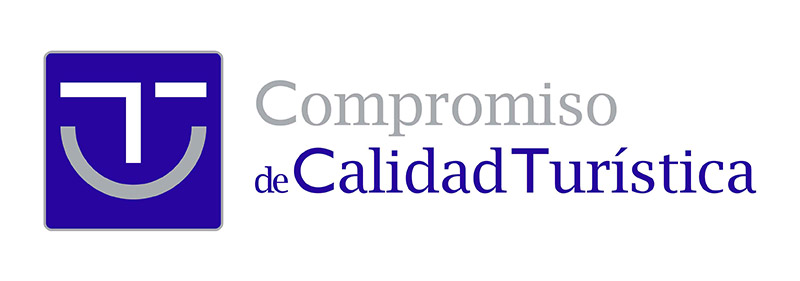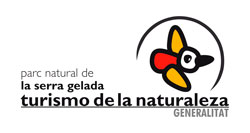Valencia, the third largest city in Spain, perfectly blends ancient history, modern architecture, world-famous cuisine, and a vibrant Mediterranean lifestyle. Whether you’re visiting for Las Fallas, the iconic paella, impressive art, or a walk along the old Turia riverbed, Valencia will win you over. Let’s discover it all! 💛
🕍 Living History: From Roman Valentia to the 21st Century
Valencia boasts over 2,000 years of history, and every corner of its old town tells the story of a vibrant and diverse past. Founded in 138 BC by the Romans under the name Valentia Edetanorum, it began as a strategic settlement flourishing along the Turia River and the Mediterranean Sea. You can still find Roman remnants, like the decumanus maximus and ancient mosaics, beneath Plaza de la Almoina, next to the Cathedral.
After the fall of the Roman Empire, Valencia passed through the hands of the Visigoths and later the Muslims, who ruled the city from the 8th century onwards. Under Islamic influence, Valencia—known then as Balansiya—flourished thanks to advanced irrigation systems, fertile farmlands, and urban innovation. Everything changed in 1238, when King James I of Aragon conquered the city and established it as part of the Crown of Aragon. This marked the beginning of the Kingdom of Valencia, with its own legal code and institutions.
Valencia’s Golden Age, during the 15th and 16th centuries, saw an explosion of economic, cultural, and artistic development. The Silk Exchange (La Lonja de la Seda), built during this era, stands as a monument to Valencia’s powerful merchant class and its Mediterranean trade. This was also the time of great writers like Ausias March and Joanot Martorell, whose chivalric novel Tirant lo Blanch is considered a precursor to Cervantes’ Don Quixote.
The following centuries brought wars, epidemics, and devastating floods—but Valencia always found a way to rise again. The 19th century brought industrial progress, and the 20th century was marked by intense social and political change. One of the city’s defining moments came with the tragic 1957 flood, which led to the creation of the Turia Gardens, a stunning green urban park where a river once flowed.
Today, Valencia proudly blends its Roman, Islamic, and Christian heritage with futuristic architecture and modern life. Walking through its streets is like traveling through time—from medieval towers to the sleek lines of the City of Arts and Sciences. In Valencia, history isn’t just something to see—it’s something you feel.
🔥 Las Fallas: Fire, Art, and Tradition
If there’s one celebration that defines the soul of Valencia, it’s Las Fallas—a spectacular fusion of art, satire, fire, and tradition. Every year in March, Valencia bursts into life as the streets are filled with gigantic sculptures (fallas), vibrant music, fireworks, and parades. Declared an Intangible Cultural Heritage of Humanity by UNESCO, Las Fallas is not just a party—it’s a deeply rooted expression of Valencian identity.
The origins of the festival date back to ancient carpenters who, on the eve of Saint Joseph’s Day (March 19th), would burn leftover wood and oil lamps marking the end of winter and the arrival of spring. Over time, those bonfires evolved into elaborate figures made of wood, cardboard, and later, polystyrene—often portraying celebrities, politicians, and humorous scenes from the year.
Each neighborhood in Valencia builds its own falla, with months of preparation culminating in a majestic exhibition of creativity and satire. The most impressive fallas reach 15 meters high, becoming true works of ephemeral art. Alongside them, smaller versions called ninots are placed—one of which is chosen to be saved from the flames and displayed in the Fallas Museum.
The celebration is packed with events: the Mascletà, an ear-shattering daily firework display at Plaza del Ayuntamiento; the Ofrenda, where thousands of falleras in traditional dress offer flowers to the Virgin of the Forsaken; and, of course, La Cremà on March 19th, when all the monuments are set ablaze in a breathtaking ritual that symbolizes renewal and letting go.
To truly understand Valencia, you must experience Las Fallas. It’s a celebration of art, community, and fire, where the city doesn’t just remember its past—it burns it down gloriously to begin again.
🍚 Paella: Valencia’s Culinary Jewel
Talking about Valencia means talking about paella, Spain’s most iconic dish and a true cultural institution in the region. Born in the Valencian countryside, paella is much more than a recipe: it is a symbol of identity, a family tradition, and a reason to gather with loved ones.
The authentic Valencian paella is made with local ingredients such as chicken, rabbit, flat green beans (ferraura), large white beans (garrofón), tomato, olive oil, paprika, water, salt, and saffron or coloring. Everything is cooked slowly in a wide, flat pan called a paellera until the rice becomes loose, flavorful, and delicious.
The secret lies in the “socarrat”, the slightly toasted layer of rice at the bottom, which many consider the crown jewel of the dish. In Valencia, cooking a good paella is an art, and sharing it on Sundays with family or friends is almost sacred.
Today, there are many versions — seafood, mixed, vegetarian — but Valencians proudly remind the world that the original paella is theirs. In fact, they’ve even launched campaigns to protect the traditional recipe.
If you visit Valencia, don’t leave without enjoying a good paella by the sea or in the countryside, prepared with love and respect for tradition. Because paella is not just a meal… it’s a celebration.
🏛 Monuments That Tell Stories
Valencia is an open-air museum. Every corner of the city hides a piece of history, from its Roman origins to its vibrant modern life. One of the most iconic landmarks is the Silk Exchange (La Lonja de la Seda), a masterpiece of civil Gothic architecture and a UNESCO World Heritage Site. Its stunning twisted columns and grand halls speak of the city’s prosperous commercial past during the 15th and 16th centuries.
Not far away stands the Valencia Cathedral, an impressive blend of Romanesque, Gothic, and Baroque styles. It is home to the Holy Chalice, which some scholars believe to be the true Holy Grail. The Miguelete bell tower rewards those who climb its 200+ steps with breathtaking views of the city.
Also worth noting are the Serranos and Quart Towers, ancient gates that once guarded medieval Valencia. Still bearing the marks of old battles, they stand today as proud symbols of the city’s resilience.
Throughout the city, you’ll also find palaces, churches, and squares filled with tales of love, conquest, trade, and art. Walking through Valencia is like stepping into a living story, where every stone has a story to tell.
Valencia is full of architectural gems:
- La Lonja de la Seda 🧱 (UNESCO site): a masterpiece of Gothic civil architecture.
- The Cathedral ⛪, home to the Holy Grail, with stunning views from El Miguelete bell tower.
- The Serranos and Quart Towers, remnants of medieval defense walls.
- The Round Square, perfect for local shopping and handicrafts.
- Central Market, a temple of modernist design and fresh Valencian flavors.
🎨 Museums for Every Taste
Valencia delivers a full cultural experience through its wide range of museums, each designed to captivate different types of visitors. Art enthusiasts will be drawn to the Museum of Fine Arts, which boasts one of Spain’s finest painting collections, including works by Velázquez, Goya, and Sorolla.
If science and innovation excite you, the City of Arts and Sciences is a must-see. This futuristic complex houses the Príncipe Felipe Science Museum, an interactive space that makes learning science fun and engaging for all ages.
For a deep dive into the city’s local history, the Valencia History Museum and the La Almoina Archaeological Museum offer a journey through time, from the Roman era to the present day, with ancient ruins, artifacts, and immersive exhibits.
Modern art lovers will appreciate the IVAM (Valencian Institute of Modern Art), a leading center in the Spanish and European art scene. And for families or Fallas fans, the Fallas Museum gives a fascinating glimpse into the city’s iconic festival, showcasing the colorful ninots that have been spared from the flames.
Valencia has a museum for every taste and every age, making each visit a new cultural adventure.
From classical art to interactive science, Valencia’s museums impress:
- Museum of Fine Arts: with masterpieces by Sorolla and Goya.
- IVAM: leading modern and contemporary art collections.
- Fallas Museum: discover the evolution of ninots over the years.
- Science Museum Príncipe Felipe: part of the futuristic City of Arts and Sciences.
🌊 The Port and Marina Real Juan Carlos I
The Port of Valencia has been a vital hub for Mediterranean trade and maritime connection since ancient times. With roots dating back to Roman times and thriving through the Middle Ages, it has developed into one of the most important ports in Europe.
In recent years, this area has undergone a remarkable transformation into a vibrant tourist and cultural destination. The Royal Marina Juan Carlos I, located in the harbor zone, was completely revamped for the 2007 America’s Cup and now offers a lively atmosphere where history, sports, dining, and leisure come together. Modern architecture and seaside promenades blend with restored historic port buildings, creating a unique waterfront landscape.
The marina regularly hosts sailing events, open-air concerts, and sports activities. Visitors can enjoy top-notch cuisine at sea-view restaurants or simply stroll among luxury yachts, cultural centers, and creative urban spaces. Without a doubt, it’s one of the most dynamic and stylish areas in Valencia.
🌳 The Great Floods and the New Turia Riverbed
One of the most dramatic events in Valencia’s recent history occurred on October 14, 1957, when heavy rains caused the Turia River to overflow its banks, resulting in a devastating flood. The tragedy claimed the lives of over 80 people and caused widespread destruction across the city. This catastrophe deeply affected the people of Valencia and led to a bold and transformative decision.
In response, the city implemented the “Plan Sur”, which diverted the course of the Turia River away from the urban center through an artificial canal to the south. This ambitious engineering project aimed to prevent future disasters and protect the growing city.
Rather than abandoning the old riverbed, Valencia embraced an innovative vision: to turn it into a vast urban garden stretching over 9 kilometers, now known as the Turia Gardens. Flowing through the city from west to east, this green ribbon has become the true lung of Valencia. It features parks, sports areas, museums, fountains, historic bridges, and the futuristic City of Arts and Sciences. Today, where once a wild river ran, locals and visitors enjoy nature, culture, and recreation in perfect harmony.
🏙️ City of Arts and Sciences
Valencia’s City of Arts and Sciences is the city’s most futuristic and iconic landmark. Designed by the renowned architects Santiago Calatrava and Félix Candela, the complex rises from the old Turia riverbed and blends seamlessly into the lush green park that now runs through the city.
Opened in 1998, this masterpiece of modern architecture brings together art, science, and nature to create a one-of-a-kind experience for visitors of all ages. Highlights include:
- L’Hemisfèric: an IMAX cinema shaped like a giant eye, offering immersive films on a huge curved screen.
- Museu de les Ciències Príncipe Felipe: an interactive science museum where you can explore DNA, the human body, space, and more through hands-on exhibits.
- L’Oceanogràfic: the largest aquarium in Europe, home to thousands of marine species and recreating ocean habitats from around the world.
- Palau de les Arts Reina Sofía: a stunning opera house and concert hall where music and performing arts come to life.
- The Ágora and the Umbracle: versatile spaces for exhibitions, events, and a beautiful elevated garden with panoramic views.
The City of Arts and Sciences is not just a must-see attraction — it’s a journey through knowledge, innovation, and creativity. Visiting it makes you feel Valencia’s vision of the future, deeply rooted in culture and wonder. It’s the perfect symbol of how Valencia fuses innovation with culture.
🌿 Turia Gardens: A Green River Through the City
The Turia Gardens are one of the largest urban parks in Europe and undoubtedly one of the most beloved spots in Valencia. They were created after the catastrophic flood of 1957, when the Turia River overflowed and caused severe damage. To prevent future disasters, the river was diverted to the south of the city, and its old riverbed was transformed into a stunning green park that now flows through Valencia from west to east.
Stretching over 9 kilometers, this green lung offers sports fields, playgrounds, fountains, bike lanes, and shaded paths ideal for running, walking, or simply relaxing. From the Parque de Cabecera to the City of Arts and Sciences, the Turia Gardens connect neighborhoods, museums, monuments, and nature in a truly unique way.
You’ll also find iconic spots like Gulliver Park, a massive playground shaped like the famous literary character, where kids can climb and slide on his limbs, or the Palau de la Música, a venue for concerts and open-air events. The old riverbed has become Valencia’s green soul — a space where nature, culture, and urban life live side by side in perfect harmony.
🛍️ Mercado Central y Lonja de la Seda: Corazón Comercial e Histórico
El Mercado Central de Valencia es mucho más que un lugar para hacer la compra: es una joya arquitectónica del modernismo valenciano y uno de los mercados de alimentos frescos más grandes de Europa. Inaugurado en 1928, su impresionante estructura de hierro, cerámica y cristal acoge a más de 300 puestos que ofrecen frutas, verduras, carnes, pescados, especias y productos típicos de la región. Recorrerlo es una experiencia para los sentidos, donde el bullicio, los aromas y los colores te sumergen en la esencia más viva de la ciudad.
Justo enfrente se encuentra la Lonja de la Seda, declarada Patrimonio de la Humanidad por la UNESCO. Este edificio gótico del siglo XV fue un importante centro de comercio de seda y otros productos en la Valencia medieval. Su impresionante salón columnado, conocido como la Sala de Contratación, refleja el poder económico que tuvo la ciudad en aquella época. Junto a su torre y el patio de los naranjos, la Lonja representa un testimonio extraordinario del esplendor mercantil valenciano.
🧡 A City to Live with All Senses
Valencia is not only seen — it’s felt. The warmth of its people, the thunder of fireworks, the scent of orange blossoms, the taste of horchata in Alboraya… Valencia is a city of sensations and moments.
📌 What Else Can You Discover?
- El Carmen district, bohemian and full of life.
- Albufera Natural Park, birthplace of the original paella.
- Bioparc, a next-generation zoo with immersive habitats.
- Urban beaches like La Malvarrosa or El Cabanyal, perfect for sunny days.
✨ Valencia Awaits
Whether you’re visiting for a weekend or staying longer, Valencia will surprise and inspire you. With rich history, impressive architecture, sunny beaches, and unmatched gastronomy — it’s one of Spain’s most complete destinations. Ready to discover it?





